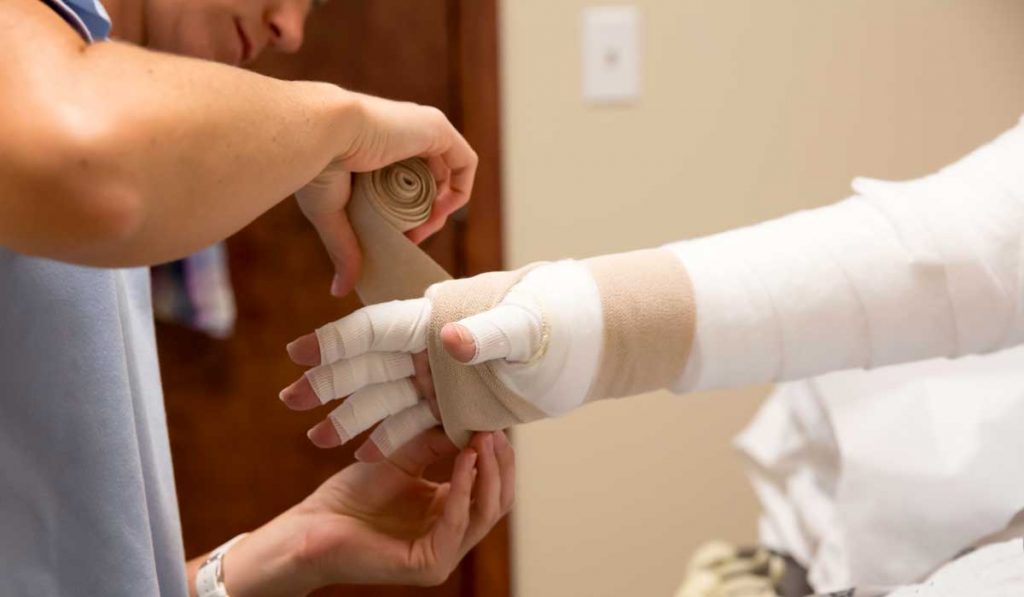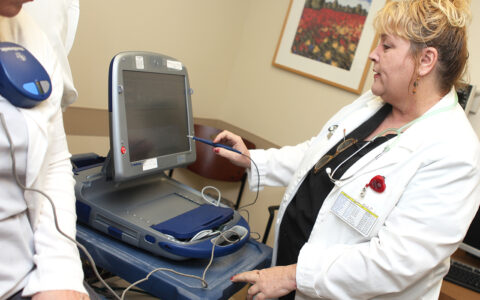Early lymphatic impairment can be difficult to detect. “If it’s missed and progresses to overt signs of lymphedema, which is an incurable condition, it can cause serious morbidity,” said Kelsey McCallops, D.P.T., of the Dayani Center for Health and Wellness at Vanderbilt University Medical Center. “Fortunately, a lot of progress has been made in terms of having more sophisticated assessment techniques to detect it earlier and minimize the progression.”
One key element in prompt, effective lymphedema care involves using the best diagnostic technology. A second vital element is strong collaboration between medical oncologists, surgical oncologists, radiation oncologists and physical therapists. Finally, a high level of education is critical, so patients will promptly report potentially important symptoms.
Early Detection Minimizes Harms
While not curable, effects of lymphedema can be minimized with early treatment. Conversely, delayed care can cause serious, chronic morbidity. Complications may include reduced functionality of affected areas, skin damage, as well as anxiety, depression and distress over body image. For women with breast cancer, impaired arm function due to lymphedema is a frequent fear.
“Fortunately, a lot of progress has been made in terms of having more sophisticated assessment techniques to detect [lymphedema] earlier and minimize the progression.”
“When the problem occurs in patients with head and neck cancer, it can affect swallowing, speaking, breathing and their ability to return to work,” McCallops said.
Bioimpedance Analyses
Traditionally, detection has relied on a history, physical exam and the use of a tape measure to assess the affected body part, McCallops says.
New technologies are improving detection and treatment. One approach involves using bioimpedance spectroscopy (BIS), which analyzes the response of bodily tissues to electrical current. BIS provides exact measurements of intracellular and extracellular fluid levels. The technology allows clinicians to monitor subtle signs in the early development of lymphedema instead of having to wait for visible swelling.
“BIS allows us detect lymphatic congestion at earlier stages than we used to be able to detect it. This lets us initiate the use of compression sleeves and gauntlets for better outcomes, as we’ve seen in the interim results from the PREVENT trial,” McCallops said.
The Dayani team has been using BIS for the last four years. The Vanderbilt Department of Physical Medicine and Rehabilitation and Vanderbilt-Ingram Cancer Center’s Breast Center will soon acquire another BIS device as a component of Vanderbilt’s expanding Cancer Rehabilitation Program.
“Lymphedema surveillance programs are increasingly using BIS to establish patient baselines prior to cancer treatment and then monitor for changes during treatment and beyond, since the risk of lymphedema development is lifelong,” said Paula Donahue, D.P.T., an assistant professor of physical medicine and rehabilitation at Vanderbilt.
Clinician Cooperation and Patient Education
“Having different care teams work in a highly collaborative way makes a huge difference in early detection of lymphedema, to get treatment going as soon as possible,” McCallops said. Collaboration can also support patient engagement. “Many at-risk patients are unfamiliar with their lymphatic system,” she explained. “They need to learn how the system works and how important it is so they can be alert to signs of impairment and help their care team initiate treatment early.”
Lacking education, McCallops says many patients may not report sensations such as heaviness, tightness or a fatigued feeling in the arm, or tightness in the face, head and neck, all of which can be early signs of lymphatic congestion. “We tell patients, ‘If something doesn’t feel right, tell us about it.’ They learn how to be their own advocates.”
“We tell patients, ‘If something doesn’t feel right, tell us about it. They learn how to be their own advocates.”
Focus on Cancer Patients
For breast cancer survivors, rates of lymphedema vary widely. The most recent literature indicates risks of about 8 percent for patients who underwent a sentinel lymph node biopsy and around 39 percent for patients who underwent an axillary dissection with radiation. In patients with head and neck cancers, Donahue says up to 75 to 90 percent develop lymphedema. “This high-risk patient population benefits from early rehabilitation to optimize posture and range of motion, and to minimize pain and prevent lymphedema onset and progression,” she said.
The risk of developing lymphedema as a result of cancer interventions including lymph node removal, radiation and some chemotherapies is lifelong.
“Recent increases in cancer survivorship have led to a heightened emphasis on patients’ long-term quality of life. This includes preventing and managing lymphedema,” McCallops said. She added, “More research is needed to help us understand how to further reduce an individual patient’s lymphedema risk after cancer treatment.”






